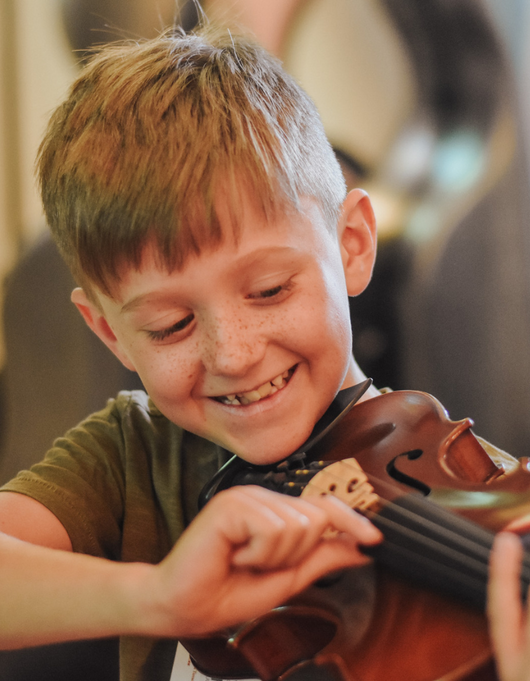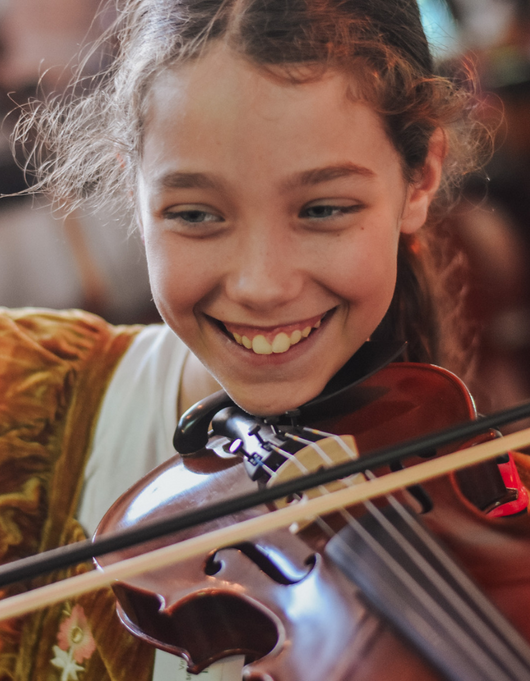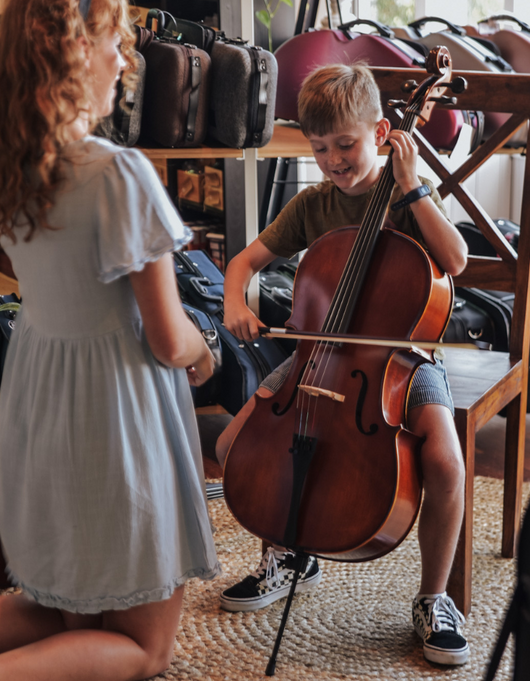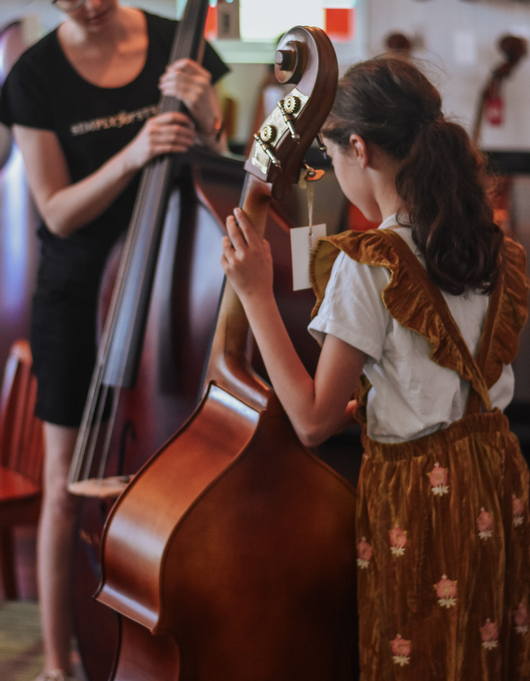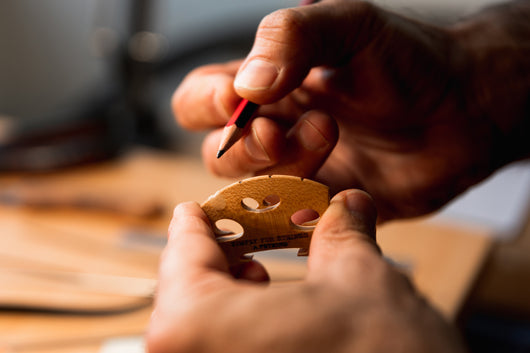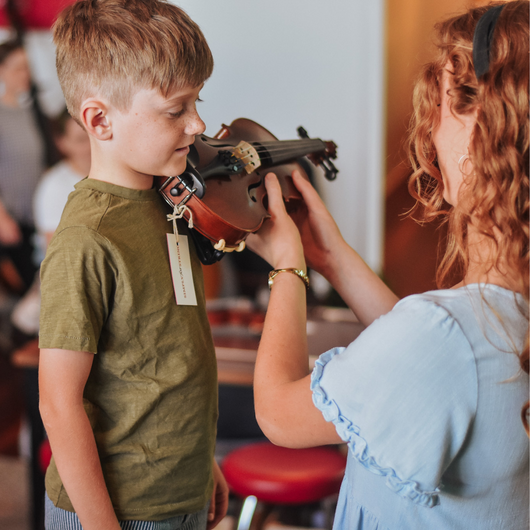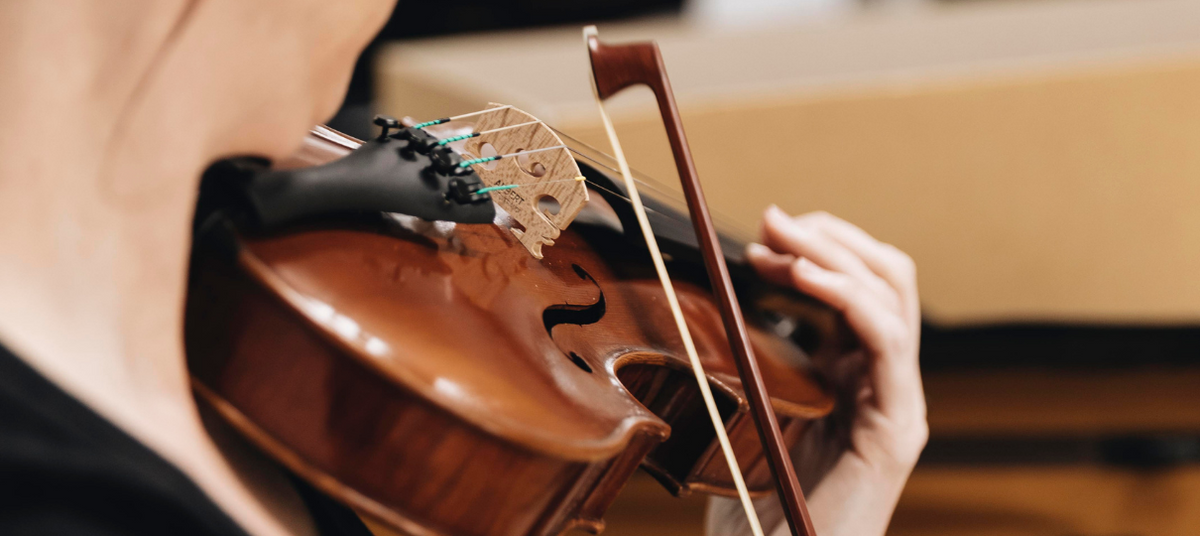If your child has been practising and performing with gusto, it may be time to take the next step and invest in a new instrument. If your child has been playing the violin for a couple of years, and you're looking to upgrade because they've outgrown their current instrument or they're ready for something a little nicer, the string experts at Simply for Strings are ready to help.
It can often be difficult for parents to know how much of a leap or investment they need to take at this stage in their child's musical education - how good does their next violin need to be, and what price and quality considerations should they take into account?
In order to assist you through the transition, we’ve put together this handy guide that runs through the key factors to take into account when upgrading to an intermediate violin! Let’s get started…
1. Brand is still important
While you’re not yet near the stage of buying a hand-crafted violin from a small European workshop, you should still take the brand of the violin into account. Our intermediate range includes the Virtuoso, Allegro and Monteverdi instrument ranges, which represent higher quality workmanship and materials and excellent value for money. Each instrument (and brand) offers their own individual tone, so it can be helpful to visit a violin store in person so you can hear how they all sound when played.
View the full range of Intermediate Violins available for purchase in our online store.
2. Don’t be afraid of a big sound!
A lot of students get very familiar with the sound that they’re hearing as they play. Even if the sound isn't as beautiful as it could be, they’re used to it under their ear and they start to trust that it is the “right” sound. This can mean that they’re put off by a nice sounding instrument because it’s not what they’re used to. It can take a lot of reassurance from their teacher and others to finally understand what a good tone sounds like!
When you’re looking to upgrade your instrument, be sure to compare the sound of everything that’s available – even if it’s out of your price range. This will give you and your child an idea of the tone that they’re trying to get to, which is usually a much bigger, more mature sound. This will help you to buy the best sounding instrument in your price range.
Listening helps too. The sounds that students produce are very simple, and sometimes the complexity of a sound can be off-putting to them – but it’s what they should be striving for. Better tones and better sounds have a lot more complexity, which allows for more emotive, complex playing. Sit down with your child and listen to some recordings of professional violinists in order to familiarise them with the more complex sounds. You can also ask staff in-store to demonstrate and analyse the sound of different violins with you so that you can understand what you’re really hearing. Our team of string experts are happy to help! Learn more about planning your visit to Simply for Strings.
3. Experiment with strings
When you graduate to a higher level of instrument, strings start to play a much bigger role in the generation of sound. The thickness or the material that strings are made of can affect the tone that you produce when you play, such as the sweetness or the brightness of the sound. Intermediate instruments should be fitted with higher quality strings, however, if you're looking to upgrade to a professional string, be sure to ask the team member helping you for their personal recommendation.
Browse our extensive range of violin strings to suit all budgets.
4. Give it a bow
Make sure that the bow you select for your violin is well-considered. The bow you use is important to the sound and the technique that you develop while learning to play. A lot of intermediate instruments will include an upgraded bow in the outfit, however, be sure you enjoy the feel and tone it produces. There is a wide range of bows available, and you may want to purchase a higher-quality bow than the one you already own. If you buy your new violin as part of an outfit you’ll receive one – however, you may still choose to purchase one separately if you’re not happy with the quality.
Browse the full range of Violin Bows in our online store.
5. Trade it in
Trading in your current instrument can help get you a better price when purchasing your next instrument. Your violin will need to have been well looked after and in reasonable condition, if you want to get a good trade-in value from it (most of the value is in the instrument itself, not necessarily the case and bow.) We welcome trade-ins of instruments purchased from Simply for Strings - a valuation can be done on the spot so, if you’re ready to upgrade, you can save time by bringing in your old violin at the time of purchase.
Learn more about our Trade-in Service for all instruments.
6. Get accessorised
There are some key accessories you should pick up in order to make the most of your new instrument:
- Rosin: Make sure you match the rosin to the strings that you’re using. String manufacturers will usually produce their own rosin to suit their strings, and there are lots of different types you can choose from. Shop Rosins.
- Violin Case: Make sure that your new instrument is adequately protected from heat and cold. A decent quality case will help to reduce the fluctuation of temperatures inside the case itself. Shop Cases.
- Shoulder Rest: As your child practices more, it will become extremely important for them to be really comfortable. A shoulder rest should be properly fitted to their body, and this can be done in-store at the time of purchase. Shop Shoulder Rests.
Remember, you don’t need to spend a fortune when upgrading your child’s violin! Following the tips above should help you find a value-for-money intermediate violin that produces good sound and tone. If in doubt, visit us in-store or get in touch and one of our knowledgeable staff can answer any questions you may still have about upgrading.
If you’re in the market for your first violin, check out our Complete Guide to Buying a Beginners Violin here.



